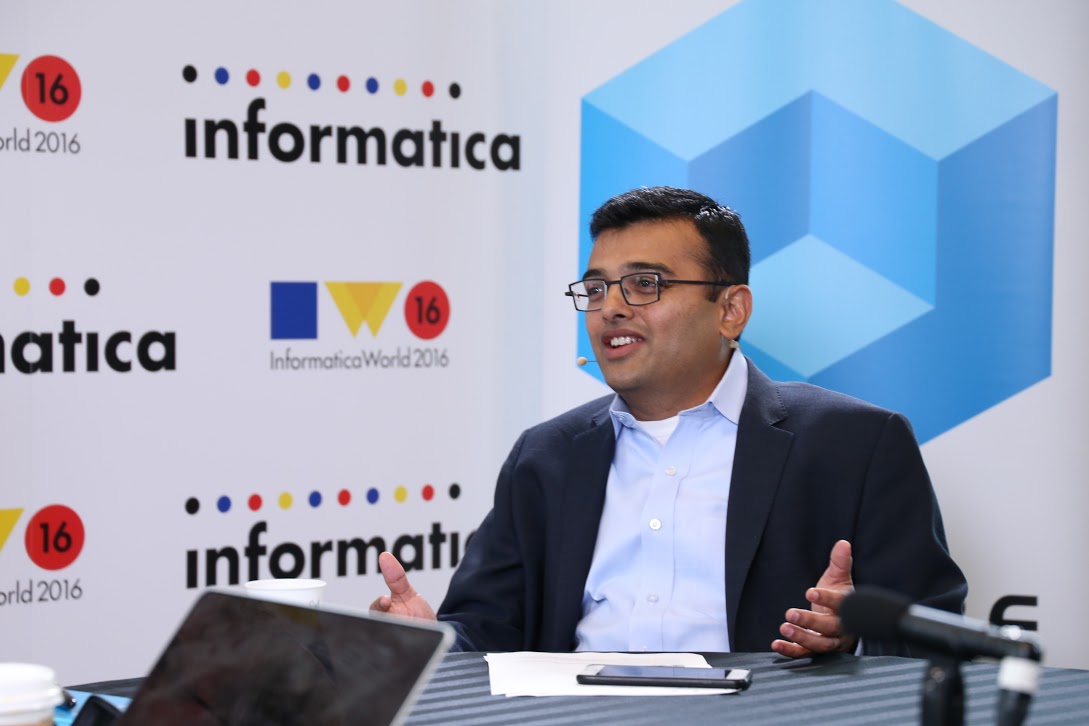 NEWS
NEWS
 NEWS
NEWS
 NEWS
NEWS
As IoT and data accrual improve in efficiency and scope, new ways of applying the two are being approached by companies looking to tap into unexamined fields. Among these pioneering efforts, new twists on the concept of ‘smart buildings’ are being investigated, with office buildings finding some of the biggest payoffs at this point.
Srihar Potineni, CTO of applications and data at Jones Lang LaSalle, IP, Inc. (JLL), sat down with John Furrier (@furrier) and Peter Burris (@plburris), cohosts of theCUBE, from the SiliconANGLE Media team, during Informatica World 2016, to discuss the innovations his company has been focusing on with these developments, along with what it’s anticipating for the near future.
One of the foremost concerns with these data-generating buildings is finding ways of balancing the newly implemented tech and its supporting infrastructures with responsible energy efficiency. Though the process of implanting the systems is enough of an undertaking for many enterprises interested in adopting these utilities, doing a complementary overhaul of their energy systems is more than many want to take on. To that end, JLL have a solution set called “IntelliCommand,” which is used to make the buildings smarter while simplifying the process for the customer and provider.
Potineni noted that while JLL is handling “billions of square feet” and “billions of dollars of transactions,” operating as it does in over 80 countries, a significant part of their work comes from concentrating on people on the individual level. As the smart buildings have sensors in place to manage and analyze human traffic flow, understanding the motivations behind these navigations is key to improving the systems integration and their results.
On a similar note, improvements can be made by encouraging companies to turn a closer eye to the internal layout of their buildings and asking themselves whether the purposes each room is currently used for is the best it could be. For many who have done this, conference rooms end up being repurposed to fit with modern usage, as traditional meeting-rooms are finding less and less opportunity to be used as they once were.
Potineni also brought up the consideration of building situation, saying that while organization within the buildings is an important side of it, the context of services nearby in the city’s layout are also of significant import.
Behind the scenes, Potineni said, data-mashing by analysts to generate new insights is where a fair chunk of the cutting-edge ideas and new deployments are being uncovered. But he also felt that it was important for this brainstorming to be turned to focus on itself as well, saying, “The future version of modeling can be more fluid, more liquid.”
Pulling the discussion together, Potineni asserted that all of these systems had the potential to be grown together over time, with faster, more productive and higher-output benefits as a result, with unimagined infrastructure networking on the horizon. “The buildings are ecosystems,” he stated. “If you look at some of the larger buildings, it’s like a small city.”
Asked to give a final thought on what was most important for organizations who had these sorts of data streams at their disposal, Potineni highlighted employee capabilities as key. “Just enable your employees. … Empower them through self-service … by providing all the data they might use to make their decisions. … Enable everybody with data. Self-service is very important.”
Watch the full interview below, and be sure to check out more of SiliconANGLE and theCUBE’s coverage of Informatica World 2016.
Support our mission to keep content open and free by engaging with theCUBE community. Join theCUBE’s Alumni Trust Network, where technology leaders connect, share intelligence and create opportunities.
Founded by tech visionaries John Furrier and Dave Vellante, SiliconANGLE Media has built a dynamic ecosystem of industry-leading digital media brands that reach 15+ million elite tech professionals. Our new proprietary theCUBE AI Video Cloud is breaking ground in audience interaction, leveraging theCUBEai.com neural network to help technology companies make data-driven decisions and stay at the forefront of industry conversations.